“In general, women are ugly in this area; the beauties are miracles there, and the pretty ones - rare exceptions, "wrote Casanova after his visit to Poland. What prompted him to make such radical judgments? And was he sometimes ... but he was wrong?
What was that all about? The difference between Polish and Italian tastes? Lack of money and the related complex that did not allow the loud lover to get close to some unknown by name of the chosen heart, which he did not want to mention in his "Diaries"? Fear of strong Sarmatians' personalities? Or maybe the 18th century Polish women were simply not beautiful at all?
Forced abstinence
Casanova was in Poland in the fall of 1765. In time, it would seem, the best for an adventurer from Italy, full of court ambitions:Stanisław August, who had just assumed the Polish throne, was still completing his court - and there was a place not only for the powerful and intellectuals, but also for the thrifty people, brave and libertine, which undoubtedly included the famous lover.
Anyway, in the eyes of the king, the King's acquaintance with Catherine the Great, with whom Poniatowski once had a passionate romance and for whom he still missed, proved to his advantage.
Moreover, the ruler open to culture was organizing a theater. This could become an opportunity for Casanova (both professionally and romance), and it became ... the primary reason why he was forced to leave Poland in a hurry. But more on that in a moment. For now, we see him coming to the Vistula River from Russia - full of hope and completely without money.
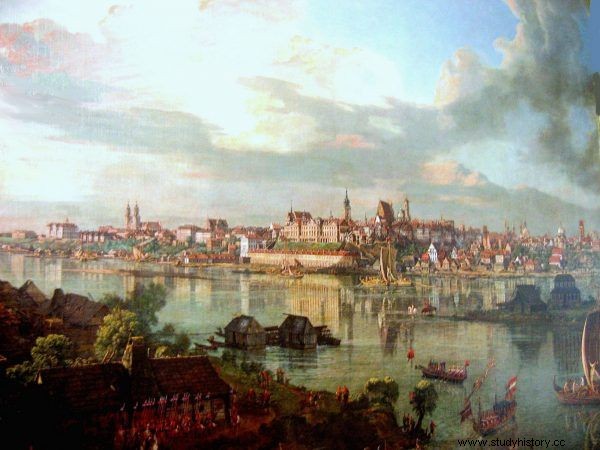
When Casanova arrived in our capital, his finances were in a deplorable state. Maybe that prevented him from finding the right mistress? In the painting 18th-century Warsaw by Bernardo Belotto.
Meanwhile, in his situation, it was necessary to "keep the shape", maintain the right vehicle, coachmen, servant, take care of clothes and hairstyle ... Therefore, as we read in Laurence Bergreen's book Casanova. In the world of the seducer , he had to lead a very regular, even ascetic, and thus cheaper lifestyle in Warsaw - hoping for a happy change.
Simply put, he couldn't afford a mistress. After all, as Bishop Krasicki himself reminds in the satire "Wife fashionable", a Polish woman could easily lead a man to bankruptcy. Casanova himself wrote in the seventh volume of "Memoirs":
Having no funds to visit gambling caves and French or Italian theaters to meet a girl, I liked the library of the Bishop of Kiev , monsieur Załuskiego and even more so himself. ...
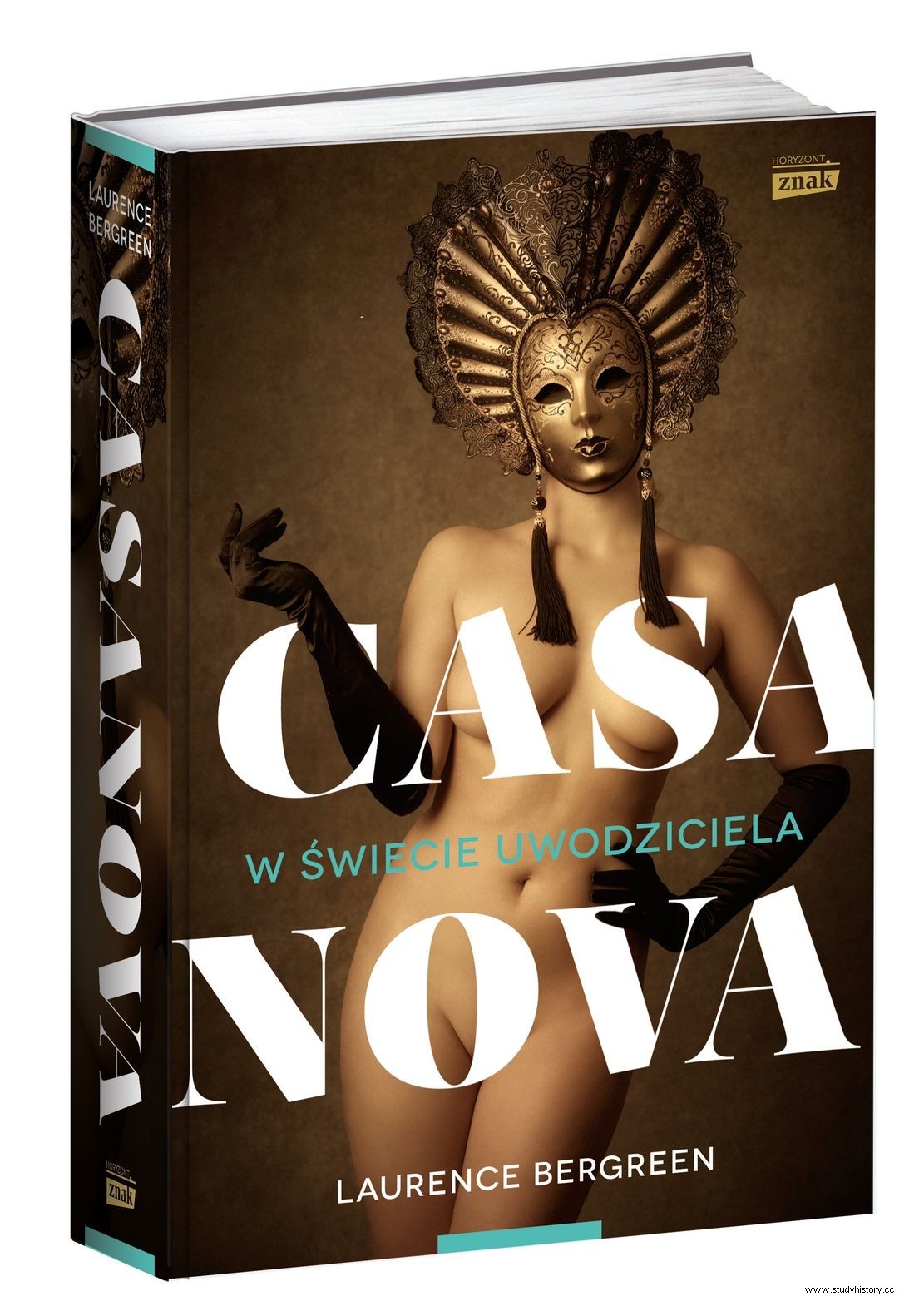
Well, the library is rarely (though it does) be a good place to make an intimate relationship. Maybe it is better, because thanks to Zaluski's library, Casanova was able to write a historical work published in Italian in 1774 entitled "The history of riots in Poland from the death of Elizabeth Petrovna to the peace between Russia and the Ottoman Port."
Liberty intimidated?
Or maybe the Italian encountered in Poland an intimidating type of a liberated woman, resourceful woman, independent of a man and not necessarily in need of a man, unknown to him so far? One that is to some extent represented by the figure of Princess Izabela Czartoryska née Flemming. Not shunned from numerous and far-reaching romances, but also friendly towards her husband.
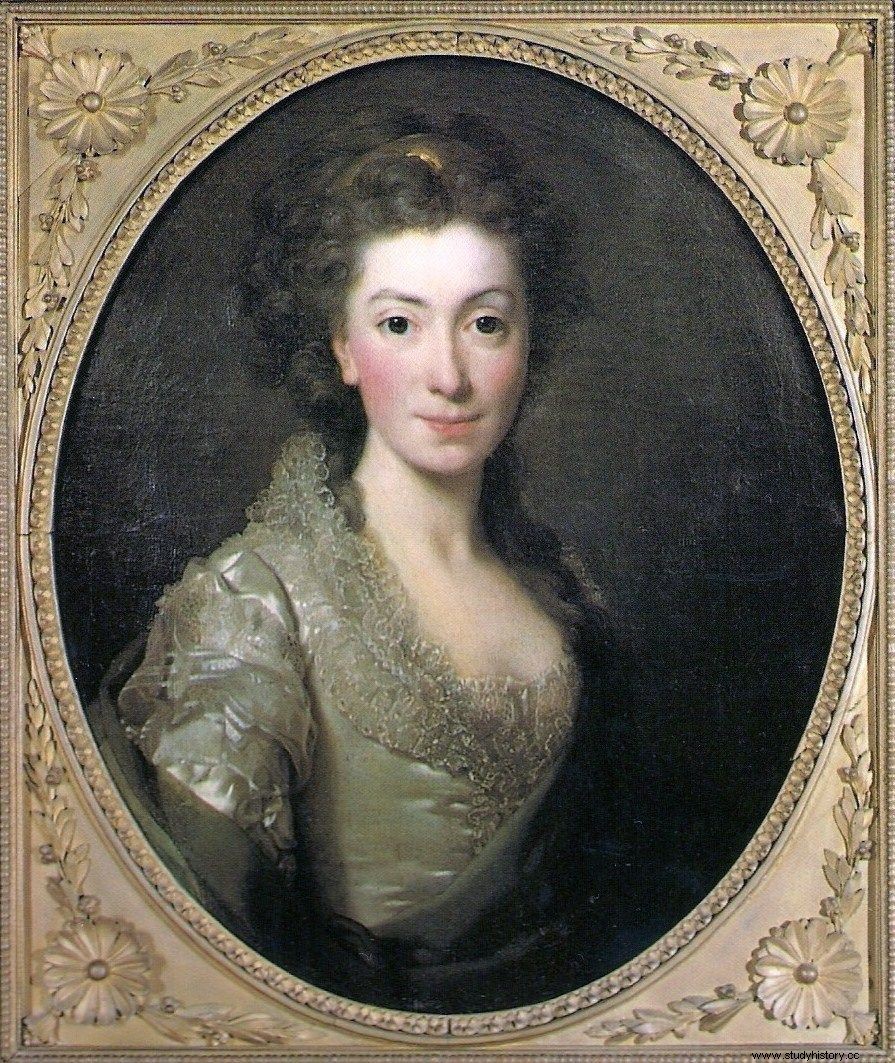
Portrait of Princess Izabela Czartoryska by Alexander Roslin. Did her independence and intelligence intimidate men like Casanova?
Affectionate, but - when necessary - treating men in advance (after all, she fired her son-in-law from the cannons when he dared to act against Poland - and the family). Sentimental and intellectualized at the same time, petite, fragile, but effective in its actions. There were a lot of women resembling the famous Princess Izabela in 18th-century Poland. Let's just recall a few of them.
Here is, for example, Urszula Dembińska, called the "Tsaritsa of Krakow" - a great, as we would say today, "businesswomen", opening more iron forges, powder magazines, glassworks and paper mills on her estates. Politically involved both in the matter of the Constitution of the Third May and in the Kościuszko Uprising, for which - together with her son-in-law Tadeusz Czacki, the first Polish archaeologist - she gave up arms and horses with a harness.
Or one of the best educated women of her era, an outstanding economist and lawyer, Anna Paulina Jabłonowska née Sapieha. She raised Siemiatycze from the fall, building here numerous manufactories, a school for midwives, a hospital and a town hall. She invited scholars and artists from all over Europe to Kock, where she extended the former Firlej palace, systematically enlarging the library and collections related to natural history.

On the left, a portrait of Urszula Dembińska by Johann Baptista Lampi the Elder. On the right, a portrait from the era of Anna Jabłonowska. Both ladies managed their estates very well.
Finally, Katarzyna Kossakowska, the protector of Jakub Frank, a great opponent of Stanisław August Poniatowski (with whom she reconciled in the last years of the Republic of Poland), and at the same time an admirer of the Constitution of the Third May, an active activist of anti-Russian and anti-Targowicki movements. Józef Ignacy Kraszewski introduced her to the pages of the novel "Stepmother", calling the magnate the most witty woman at a time when no one was too much of a joke:
Mrs. Kossakowska had Potocczyzna's wit (as she called her), proud, sharp, unmerciful, serious, ironic, not playful and not flexible at all. She cut it like a scimitar, and whoever got it on the head, he carried the scar for a long time. More than once the king himself had gotten himself.
At the same time, Kraszewski drew attention to one more trait of the aristocrat:she was deadly intelligent, and at the same time very ugly. He wrote that she was "a woman of the right height, dry and thin, with fat and masculine features, dressed less carefully, although the outfit was expensive." Is this the image of Polish women remembered by the Italian? Nine years older than Casanova, Kossakowska probably would not have had a chance with him, although he did not despise women more mature than himself. Question:because of her lack of beauty or too much intelligence?
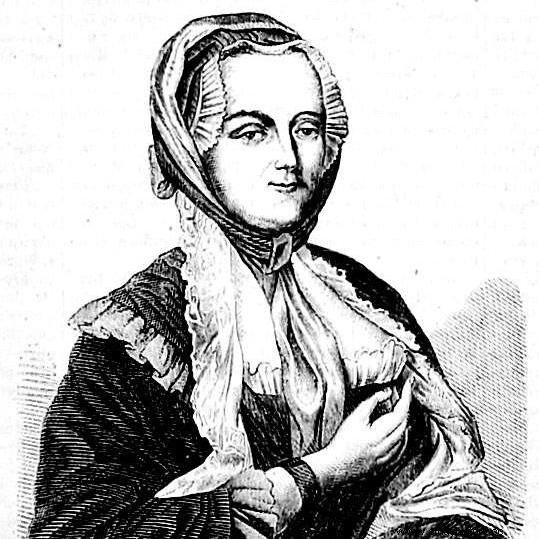
The illustration shows a drawing by Katarzyna Kossakowska née Potocka, published in 1862 in the Illustrated Weekly. Hellishly intelligent, a defender of the Constitution of May 3, she was not afraid to express her opinion out loud. Maybe this discouraged Casanova in Polish women?
Bad choice
In any case, the libertine decided not to seduce any Polish woman. He chose the Italian actress of the Warsaw theater, Teresa Casacci, who was also loved by the great Crown Prince, Franciszek Ksawery Branicki (later a traitor). There was a duel, as a result of which the aristocrat was badly wounded in the stomach, which was one of the reasons why Casanova lost the trust of the Polish king and had to leave our country.
At the end, he also argued that “Poles, although quite polite today, are still very attached to their former disposition. They are still Sarmatians or Dacians at the table, at war and in the frenzy of what they call friendship, which is often just a terrible tyranny. " So his critical opinion about Poland did not only apply to women, but also to men.
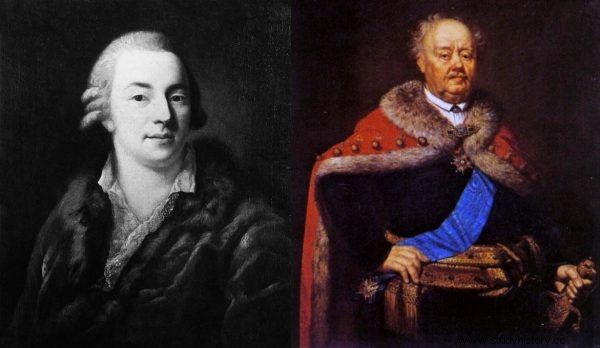
Unfortunately, Casanova only managed to hurt Branicki badly. On the left, a portrait of the famous seducer by Alessandro Longhi from 1774. On the right, a portrait of the famous traitor by János Rombauer from 1818.
Fortunately, not everyone agreed with him. Another foreigner who visited Poland at that time, Fryderyk Schulz, noticed with clear pleasure the details of women's elegance in Stanisławów Poland:“The basis of French-English fashion is the basis for women's attire; Minor details add Polish women, drawing them from their own taste and invention. The headdress has its own characteristic and is distinguished by something intermediate between French stiffness and English naturalness, which seems to resemble the East very gracefully.
In this regard, ladies are inexhaustible and abundant in inventions. Even at ceremonial occasions with gala clothes, which are stiff and heavy everywhere, they can impart lightness and airiness that attract the eyes nicely. They also dress skillfully in diamonds. " And let's stick to that.
Biography:
- Monika Prus, Dressing room of Polish elegant ladies in the 18th century , Białystok Historical Portfolios, vol. 13/2015, University of Białystok.
- Public, private, intimate in the 18th century culture , (ed.) Teresa Kostkiewiczowa, DiG publishing house, Warsaw 2014.
- Laurence Bergreen, Casanova. In the world of the seducer , Znak Horyzont, Krakow 2017.
- Giovanni Giacomo Casanova, Diaries , Czytelnik, Warsaw 1972.
